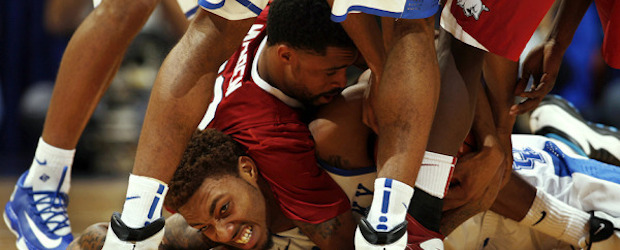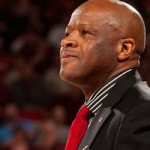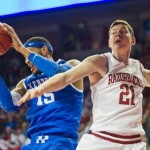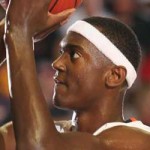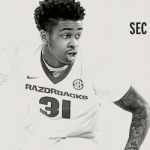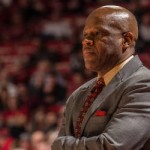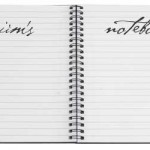 Bob Knight may be aging not so gracefully as a color analyst on ESPN, but he harped almost nauseatingly on three points throughout the Arkansas-Kentucky game Thursday night, three areas of play that were prescient in the Razorbacks’ stunning 71-67 overtime win in Rupp Arena.
Bob Knight may be aging not so gracefully as a color analyst on ESPN, but he harped almost nauseatingly on three points throughout the Arkansas-Kentucky game Thursday night, three areas of play that were prescient in the Razorbacks’ stunning 71-67 overtime win in Rupp Arena.
Knight, who won three national championships during his combative days as the head coach at Indiana, couldn’t seem to get enough of describing every successful drive to the basket — by either team — as a matter of the help-side defender not rotating quickly enough to stop the drive. It happened in the paint on Arkansas’ defensive end, where Kentucky scored about 80 percent of its first-half points. It happened less frequently on the opposite goal, as the Hogs found scoring opportunities more off steals and by hitting their outside shots in building a 12-point lead before it was carved to 7, 37-30, by halftime.
Knight’s second most-favored observation came when players on either teams failed to give a shot fake to draw a defender, when would then have allowed them to drive to the bucket for an easier score or draw a foul. Classic Hoosiers basketball back in the 1980s.
And while it wasn’t a complaint, Knight early on was noting the free throws, watching how they were shot and whether they were destined to drop. He only missed a call on one: Ky Madden’s tying foul shot that eventually sent the game into overtime with the teams deadlocked at 60.
ESPN’s coverage for this Thursday night showcase in Rupp Arena afforded us more sideline looks at UA coach Mike Anderson, and we saw he too wasn’t happy at times with the lack of rotation on the back end of the Hogs’ defense. In particular, Michael Qualls — as much energy as he provided with his early steals and dunks — was caught watching on one drive inside, and Knight didn’t miss the opportunity to point it out. But ESPN also showed Anderson with a perplexed look. I think many of us who no longer get the chance to watch practice wonder sometimes what the players are taught — we put way too much stock on the coaches failing the team (in every sport, not just Hog basketball) when the players are the ones having to make the plays. We would learn later, to Knight and Anderson’s delight, that some Hogs are quite adept at rotating, and it would save the game.
That one particular play cited above might answer many of the fans’ queries on Twitter as to why Qualls wasn’t in the game during the tense overtime, where defense and foul shots would decide it.
But Coty Clarke, Alandise Harris and Bobby Portis were on the court and playing just the way Knight would have wanted them too back in his coaching glory days.
The backboard microphone often caught the strained exhortations of Clarke, Portis, or Harris giving that extra oomph they found within to get a finger or hand on a Kentucky shot late. The cliché of “our players wanted it more” seems to make sense taken in that context.
The Wildcats’ chance to win in the final seconds of regulation was stopped by Clarke’s quick help-side rotation and swat-away of Aaron Harrison’s driving attempt. It happened so fast, Harris had a chance to fly down court and toss up a 30-footer that hit the front of the rim at the horn.
Fortunately for the Hog faithful, it wouldn’t be their last chance. Clarke gave Arkansas the lead for good in overtime with a 3-pointer, and the Hogs kept making those free throws. In the late going, we saw some of those shot fakes and drives to draw fouls, too. Arkansas can’t shoot free throws any better than it did Thursday.
Can anyone today imagine that Arkansas turned the ball over 20 times, to 18 for Kentucky, and were outrebounded by 11 (though the Hogs closed that rebounding gap significantly over the last 12 minutes of regulation and the overtime) and still walked out of Rupp Arena with its first win there in 20 years?
The amazing foul shooting — 16 of 16 by Arkansas vs. a woeful 12 of 22 for Kentucky — made up most of the difference. Sophomore Anthlon Bell, a struggling non-factor as a shooter until his sudden resurgence Saturday at Mississippi State, contributed 10 points Thursday, including two buckets in the second half during a long spell when none of his teammates could scratch. Qualls found his range early. Portis regained his late after going nearly the entire second half without a basket. Knight wondered aloud if Portis had even played much in the final 25 minutes.
Ky Madden did little offensively except make the biggest two free throws of his career to even the game in the final moments of regulation. What will go unsaid by many is how well he defended the perimeter, where Kentucky found little success.
The Wildcats are being blasted by some national basketball writers as underachievers — remember, this is a team with six McDonald’s All-American freshmen, and Blue Bloods were dreaming of a 40-0 romp to a second national championship in three years.
The 2012 UK team had better backcourt decision-making, a powerful wing scorer in Michael Kidd-Gilchrist, and the Player of the Year down low in shot-blocker Anthony Davis, plus sophomore holders like Terrence Jones and Dorian Lamb who led the precocious freshmen by example. And they could shoot. They may never assemble a group quite like it, however easy the Kentucky fans think it is for John Calipari to reload every year.
But big sophomore Willie Cauley-Stein’s play on Thursday night may also be just what Kentucky needs to advance at least to the Sweet Sixteen of the NCAA Tournament — the Wildcats are unlikely to run up against anybody in the first two rounds who can contend with WCS and freshman post Julius Randle inside. Kentucky’s undoing will be on the perimeter, as it was against Florida two weeks ago at home and was again on Thursday night.
Meanwhile, a Razorback team that most considered a long shot for the NIT just four weeks ago, when it stood 2-6 in the SEC, is now a winner in 6 of its last 7, with two home games and a winnable road game at Alabama left before the SEC Tournament. One more win gives them 20 for the first time under Mike Anderson. Now, with the win at Rupp, the Hogs are in great position to determine for themselves if they make the Dance.
Even Knight would say there are moments when any game looks winnable for Arkansas — he fouled up in saying “seconds” but he noted a 5- or 6-minute stretch in the first half where he said “Arkansas is playing well enough to beat anyone in the nation.”
Of course, 5-6 minute stretches are just a small portion of the game. Arkansas went another nearly 7-minute period in Lexington, like they did in Starkville the end the second half, scoring just one basket — when a 50-43 lead eventually became a 54-52 deficit. It became 57-52 Kentucky before the Hogs showed their new-found growth at handling late pressure situations.
At Georgia, the Hogs went 20-plus minutes of the second half and overtime managing just SIX points — a game the Bulldogs were all but trying to give them and finally took away in overtime. Amazingly, that same Georgia team that looked awful in early January stands third in the SEC standings at 10-5. Arkansas is in the logjam right behind the ‘Dawgs in fourth at 8-7. Arkansas, with just a day’s rest, likely will see a much better effort out of the balanced Bulldogs then they witnessed in Athens —Georgia has good guards and a bruising front line that will bang the boards, though nobody is in Cauley-Stein’s class — on Saturday in Bud Walton Arena. The Hogs were already talking about Georgia moments after their huge win in Rupp, which is a good sign.
Then on Tuesday comes Ole Miss, which seemingly has had Arkansas’ number for almost 20 years, winning at least one game and often two against the Razorbacks every year since 1995. Knowing the two programs’ basketball histories, that fact alone seems almost as unfathomable as Arkansas’ winning in Rupp Arena seemed before Thursday’s tip-off.


